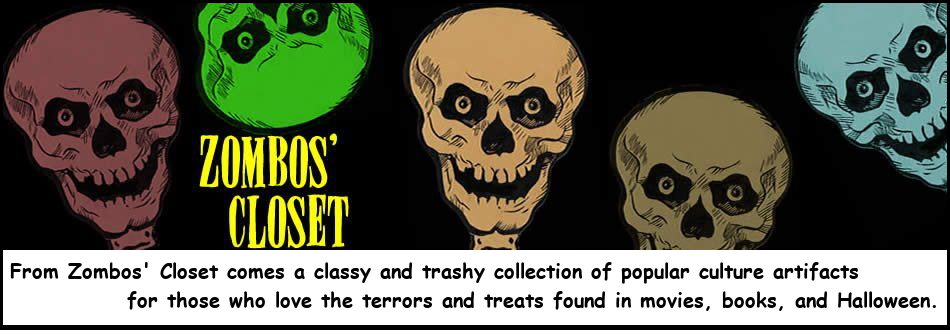 With the imprimatur of S.T. Joshi, Lovecraft’s own Boswell, you would think that Nancy Kilpatrick’s collection of Thirteen Plus-1 Lovecraftian Narratives would be a classically written addition to the oeuvre of H.P. Lovecraft’s influence across the decades.
With the imprimatur of S.T. Joshi, Lovecraft’s own Boswell, you would think that Nancy Kilpatrick’s collection of Thirteen Plus-1 Lovecraftian Narratives would be a classically written addition to the oeuvre of H.P. Lovecraft’s influence across the decades.
Well, you would be wrong, sort of: while it is classily written to the literary essence of that lonely man from Providence, while her contemporary characters get no fair treatment as expected, she makes us feel every last terror as they live it. They may be Lovecrafted with all the fears, alienness, and cosmic-joking punishments she can throw at them, which is bad for them, good for us readers, but she imbues that cold otherness at the fringes of the cosmos, and the sanity-slippage that travels with it, with their emotions. Those feelings can be cruel to see and Kilpatrick excels at showing it. Her awareness of the social forces affecting her characters helps provide depth and a greater natural fit going against the unnatural.
In his forward, S.T. Joshi notes that “there was a time when writing pastiches of the work of H. P. Lovecraft was the literary equivalent of slumming.” You can rest assured there is no slumming in this collection. The opening salvo, A Crazy Mistake, hits its target, bringing a touch of madness that slowly grows as Kim, a researcher of myth, legend, history, and anything that would make a sellable movie, peels back reality to find something more sinister. And just will not let it go.
It starts with an inebriated director’s request to find “the first women aliens have knocked up. You know, the Amazons or something.” Kim’s research leads her down the rabbit hole to find more than the Amazons, to pre-historic, goddess-worshipping societies and the oldest, weirdest images. Soon she’s learning about the Great Old Ones, mentions of an expedition in the 1930s initiated by Miskatonic University, unusual remains found in Antarctica, and eventually to an image of a huge woman with a beehive-head, matching a clay figure Kim’s infatuated with. Kilpatrick moves quickly and methodically, using key Lovecraftian references, replacing Kim’s enthusiasm with the horror that comes from her realization of what she is uncovering.
Here are some of my favorites from the collection.
In Always a Castle? Dana Keenan becomes caught by the unexpected in her new position as companion to an aged widow, in a way not mentioned in the job description. The Tudor-Jacobean styled estate of the Whaterleys is a long drive from its neighbors and her degree in antique décor shows through the many fine furnishings she notices as she makes her way up to the room where her charge is bedridden. Unfortunately, the growing odor emanating from that room, the many generations of that family and their weird traits, and her eventual plan to kill off the family, if she can survive, seal her alienation from the normal.
Alienation from the normal, a key Lovecraftian theme, is embraced by Dr. Todd, a grotesque dermatologist with “a face a lower lifeform might admire” who leads Liz down a dark path of poking and prodding to make her more pretty because she was thirty-eight and, worst of nightmares, could die single and childless. At least that is what her best friend and cousin kept telling her. The Eye of the Beholder is reminiscent of Ray Bradbury’s The Skeleton but with a very different, maternally morbid, and body-horror twist that brings the alien otherness of Lovecraft and societal preconceptions together with a bit of madness.
Esmerelda is the Gurrl Undeleted, sitting in first class, car 2, cabin 3, on the train to the Black Forest, her dream vacation. So much for that goal. The trip takes an odd turn when first class brings her close to an unpleasant group of short, square people, shoe-horned in with her. Leaving her stifling job where no one appreciates her talent, and worse, even steals her work, she now finds herself in another unpleasant situation. But what is real?
When Genna reluctantly returns to Innsmouth in Mourning People, the last of her line, will she survive the family madness as she deals with her past? Will Kinsey survive The Oldies’ support group and their problems, and those dark places from where the Old Ones wait? That her friends meet up at a place for drinks called The Eleusinian Mysteries may be a clue. Is Ian dreaming in The Visitor, when the Palmetto talks to him? It is not often a bug tells him it is his spirit animal.
Kilpatrick has a knack for writing between the lines, interjecting the humanness-baggage each of her characters must carry through their jobs, their lives, while handling the monstrous tossed their way by the unexpected malevolent forces surrounding them. In this regard, her stories’ points of view are that of the person experiencing the horror instead of the horrible experience happening to a person. In this way she goes one better than Lovecraft, where he remained clinical in his details, she intensifies the horror through the feelings, thoughts, and varying degrees of awareness her women and men cycle through.
Each person in this collection may not experience multi-tentacled beasties or traverse cosmic landscapes where angles are oddly ignored, but each person here steps from the mundane to the bizarre, from the light to the dark, from the comfort of familiar surroundings to the alien discomfort when those surroundings change in ways that challenge the soul and the mind.
Kilpatrick breathes Lovecraft’s doom-soaked vapors into each of her people and the question each must answer is how they will survive. As if they even had a chance?
This review first appeared in The Horrorzine. Please go there to read more reviews and delectable horror stories.





























